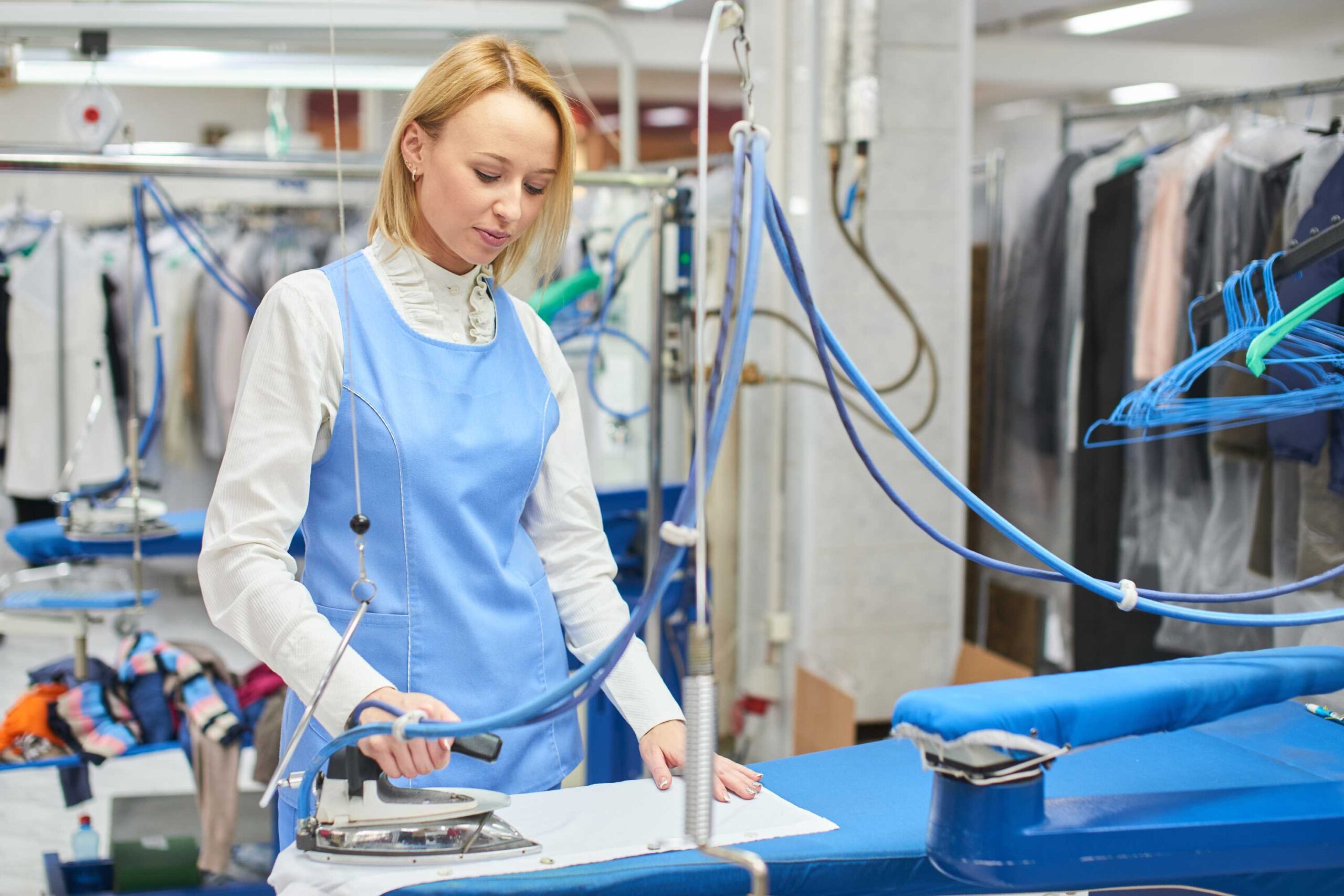Dry cleaning has been a staple in our society for over a century, providing us with the convenience of keeping our delicate fabrics looking pristine. However, as times have changed and environmental concerns have grown, so too has the need for more sustainable alternatives to traditional dry cleaners methods.
In this blog post, we’ll explore the fascinating history of dry cleaners and how they’ve evolved from harsh chemicals to environmentally friendly solutions that promote sustainability.
Join us on this journey through time as we discover the past, present and future of dry cleaners!
Dry Cleaning History
Dry cleaning has been around for centuries, with early forms of the process dating back to ancient Rome.
The practice was brought over to Europe during the Middle Ages, where it was used primarily by royalty and aristocrats. These early dry cleaners would use a variety of substances, such as clay or sand, to absorb dirt and stains from fabrics.
With the advent of industrialisation in the 19th century, dry cleaning began to take on a more modern form. In 1855, Frenchman Jean Baptiste Jolly discovered that petroleum-based solvents could be used to clean fabrics without damaging them.
This discovery paved the way for commercially viable dry-cleaning methods, and businesses began popping up all over Europe and America.
In the early days of dry cleaning, harsh chemicals such as carbon tetrachloride were commonly used as solvents.
Today’s dry cleaners continue on this journey of evolution towards becoming environmentally friendly while still providing convenient solutions for keeping our clothes looking their best.
The Rise of Sustainable Dry Cleaning Methods
The traditional dry cleaning method has long relied on toxic and hazardous chemicals that are harmful to both the environment and human health. But with growing environmental concerns, more sustainable alternatives have emerged in recent years.
One of these alternatives is wet cleaning, which uses water-based detergents and specialised equipment to clean delicate fabrics without damaging them. This process doesn’t use any harsh chemicals or solvents, making it a safer option for both people and the planet.
Another sustainable dry cleaning alternative is CO2 cleaning, which uses carbon dioxide instead of traditional solvents. The CO2 used in this process is captured from industrial processes rather than being produced solely for dry cleaning purposes, making it an eco-friendly choice.
In addition to wet cleaning and CO2 cleaning, some companies also use biodegradable detergents made from natural ingredients like citrus or soybeans. These methods not only reduce harm to the environment but also provide customers with a healthier way to care for their clothing.
As the world becomes more conscious of its impact on the environment, it’s essential for industries to adapt and evolve. Laundry Service London has made significant strides towards sustainability in recent years, with new technologies and methods that reduce waste and harmful chemicals.
The use of non-toxic solvents like liquid CO2 or GreenEarth Cleaning solution is becoming increasingly popular among dry cleaners. These solutions are gentler on clothes, don’t produce hazardous waste, and are less harmful to both workers’ health and the environment.
Additionally, many dry cleaners now offer hanger recycling programs where customers can return their hangers instead of throwing them away. This simple initiative reduces landfill waste by millions of hangers each year.
It’s encouraging to see that sustainable practices have become a priority for dry cleaning businesses worldwide – an essential step towards creating a cleaner, healthier future.
As consumers become increasingly conscious of environmental issues, there’s no doubt that demand for sustainable dry-cleaning methods will continue to rise. With new technologies constantly emerging, we can expect even more innovative solutions in the future!
The Future of Dry Cleaning
As people continue to be more environmentally conscious, it is clear that the future of dry cleaning must prioritise sustainability. One exciting development in this area is using liquid carbon dioxide as a solvent instead of traditional toxic chemicals.
Another trend we can expect to see is the use of automation and technology. This could include automated sorting, robotic pressing machines, and even online scheduling for pickup and delivery. These advancements not only improve efficiency but also reduce human error.
Furthermore, some companies are experimenting with non-toxic detergents made from plant-based enzymes or other natural materials, such as biodegradable surfactants. These alternatives not only benefit the environment but also provide a safer alternative for workers who handle these products daily.
Eco-conscious consumers may choose to support businesses that offer reusable garment bags
Which are made from recycled materials or even encourage customers to donate their hangers back to the cleaners for reuse.
Conclusion
As we can see, dry cleaning has come a long way from its early days using hazardous solvents to the sustainable solutions available today.
Consumers are demanding more environmentally friendly options.
And it’s clear that dry cleaners have responded to this call by adopting new technologies and methods.
The future of dry cleaning is exciting as there are many innovative ideas being explored.
Such as carbon dioxide-based systems, wet-cleaning processes, and even robots!
The evolution of dry cleaning from harmful solvents to sustainable solutions has been significant over the years.
While there may be obstacles along the way, we should continue supporting businesses that prioritise environmental safety in their operations. Together we can create a cleaner environment not just for ourselves but also for future generations!
Visit Site: abcbnews




